Sometimes, you can’t ignore the power of job simulations when looking for that perfect future employee.
These assessments allow candidates to show off their skills and abilities in a realistic setting. Whether hiring for customer service or software development, job simulations provide valuable real-world data to help you make the best hiring decisions possible.
In this article, we’re diving into the fascinating world of job simulations, exploring their key benefits, and giving you practical advice on choosing the right one for your needs.
TL;DR – Key Takeaways
- A job simulation, or work simulation, refers to pre-employment tests that give both candidates and employers a glimpse into their performance on the job.
- By asking prospective candidates to complete tasks similar to those expected from them on the job, hiring managers can evaluate job-specific skills, gather candidate insights, and even reduce bias in the hiring process.
- Additionally, by allowing candidates to demonstrate their skills and capabilities in a realistic setting, candidates are able to self-select, leading to higher job satisfaction.
- Examples of job simulations include skills assessments, cognitive ability tests, take-home assignments, live job simulations like role playing, and personality/culture fit tests.
- Toggl Hire’s Test Library is a robust resource of professionally crafted questions to help you create the perfect job simulation assessment.
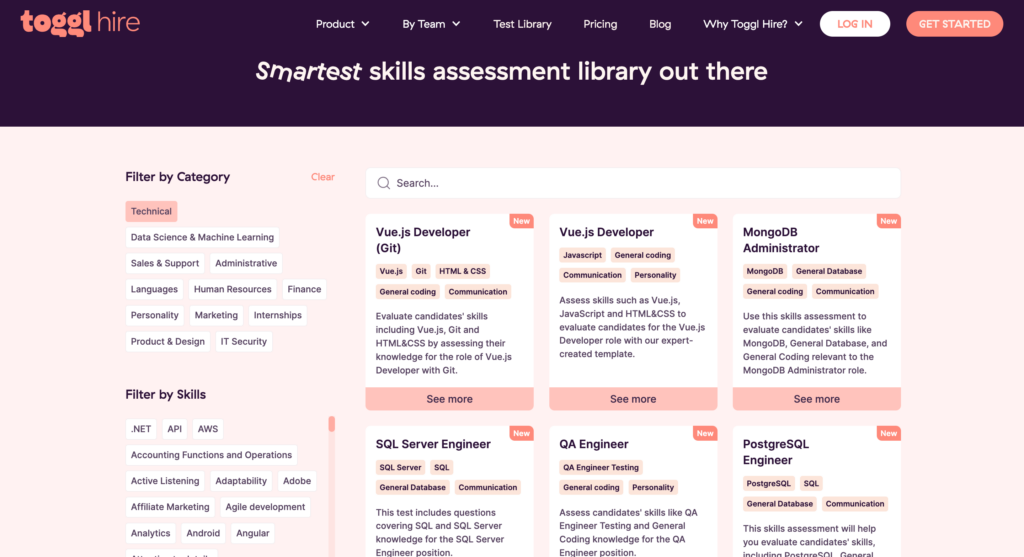
Job simulations definition – what are they, actually?
Job simulations are a type of pre-employment assessment that gives hiring managers valuable insight into how candidates might perform on the job. Plus, they allow candidates to showcase their skills and abilities in a job-like setting. Think of it like a test drive for job performance.
Instead of relying solely on resumes and interviews, successful job simulations are another piece of the puzzle that helps hiring teams make better-informed hiring decisions.
Here are 3 examples:
- In a customer service job simulation, candidates may interact with a simulated customer to assess how they communicate, solve problems, and interact.
- For a software development role, the simulation might involve writing code to solve a real-world problem.
- And in a sales position, candidates could be challenged to make a sales pitch to a simulated customer.

The beauty of a job simulation is that they can be used at any stage of the hiring process. For example:
- They are particularly useful in the early screening stage, allowing you to efficiently assess a large number of candidates and identify the most qualified ones early on – saving time and money.
- Job simulations also shine in the final interview stage, providing a more in-depth look at your candidate shortlist, helping to compare candidates, and to inform your decision-making.
7 benefits of using job simulations
We’ve already said that job simulations can be used to make more informed hiring decisions, a key benefit in itself. Let’s break it down further by analyzing seven additional benefits of work simulations.
#1 – Evaluate Job-Specific Skills
For most roles, you’ll need to find and attract candidates with a specific set of skills. Traditional hiring methods like resumes and job interviews can only tell you so much. A job simulation can help you to complete the picture by allowing you to assess the exact skills, knowledge, and competencies needed for the role.
Creating the right job simulation starts with the job description. The more specific and tailored it is, the better the results will be. Boosting confidence in your hiring decisions while also reducing the risk of a bad hire.
#2 – Well-Rounded Candidate Insights
Beyond proving that the candidate can do the job, job simulations also equip hiring managers with critical insight into how well they might perform.
Job simulations, like role-plays or situational judgment tests, reveal aspects of candidates’ personalities that you might otherwise miss. They can bring red flags to your attention, like poor attention to detail, or they might pleasantly surprise you with strengths like strong decision-making and organization.
Job simulations can provide hiring managers with well-rounded candidate insights by assessing candidates’ job-related strengths, weaknesses, and cultural fit.
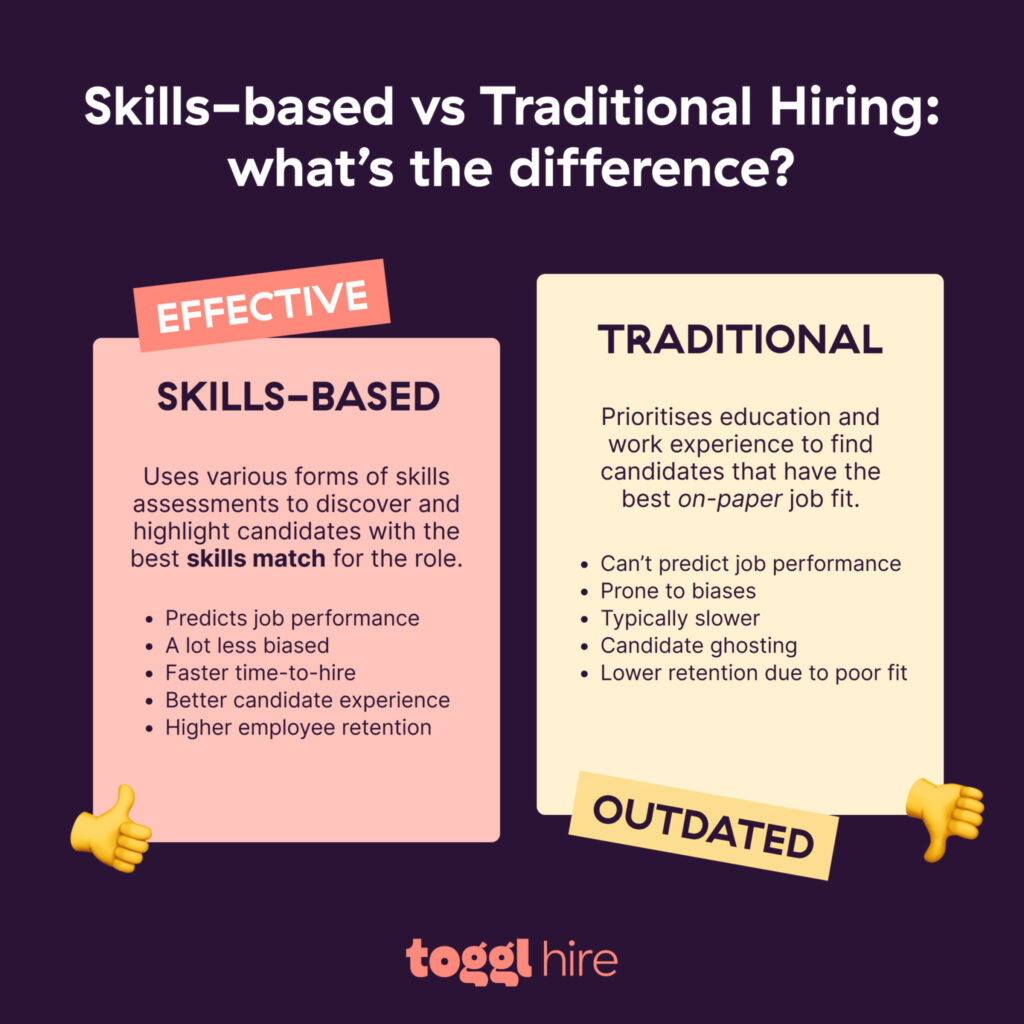
#3 – Another Touchpoint to Remove Bias
We all have biases, whether we’re aware of them or not. If left unchecked, these unconscious biases can affect our judgments and evaluations, potentially leading to unfair treatment and missed opportunities. Here, job simulations allow for an additional layer of fairness and objectivity, helping to remove bias from the hiring process.
By emphasizing real-life performance, a job simulation allows you to assess candidates based on their actual skills and abilities rather than relying on more subjective judgments. This ensures that you make hiring decisions based on concrete evidence and merit rather than letting unconscious bias influence your choices.
#4 – Enable Self Selection
Recruiters know the frustration of offering a candidate a role only to have them decline because it doesn’t align with their interests. Job simulations give potential hires a chance to get a taste of the job before making a final decision, leading to higher job satisfaction.
It’s a win-win situation that helps you streamline hiring and ensures that you’re investing in candidates who are genuinely interested in joining your team.
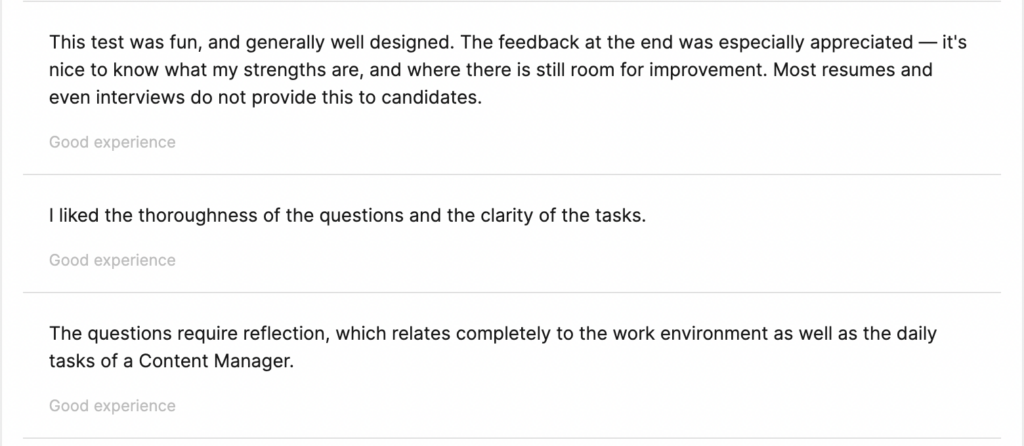
Think of a job simulation as an opportunity to let candidates self-select. Those who don’t feel a connection or passion for the role can opt out before reaching the final hiring stages. It’s like a natural selection process for both sides, allowing you to focus your time and efforts on candidates who genuinely want the position.
According to research, one of the most common reasons for new hires to quit in the first year after accepting a job offer is realizing the advertised job requirements don’t match the actual job content.
One way that candidates decide whether a role will suit them is if it requires a certain level of skills, knowledge, qualifications and/or experience. It is an unpleasant feeling to start a new job and then realize that you are either overqualifed or underqualifed to perform the duties.
Korn Ferry report
#5 – Predict Performance
When it comes to predicting job performance, job simulations have a unique advantage. By immersing candidates in scenarios that mirror the challenges they’ll face in the real role, you can observe how they tackle problems, make decisions, and handle complex tasks.
It’s a trial run that allows you to assess candidates’ abilities, important skills, and traits required for the role, as well as overall fit for the job.
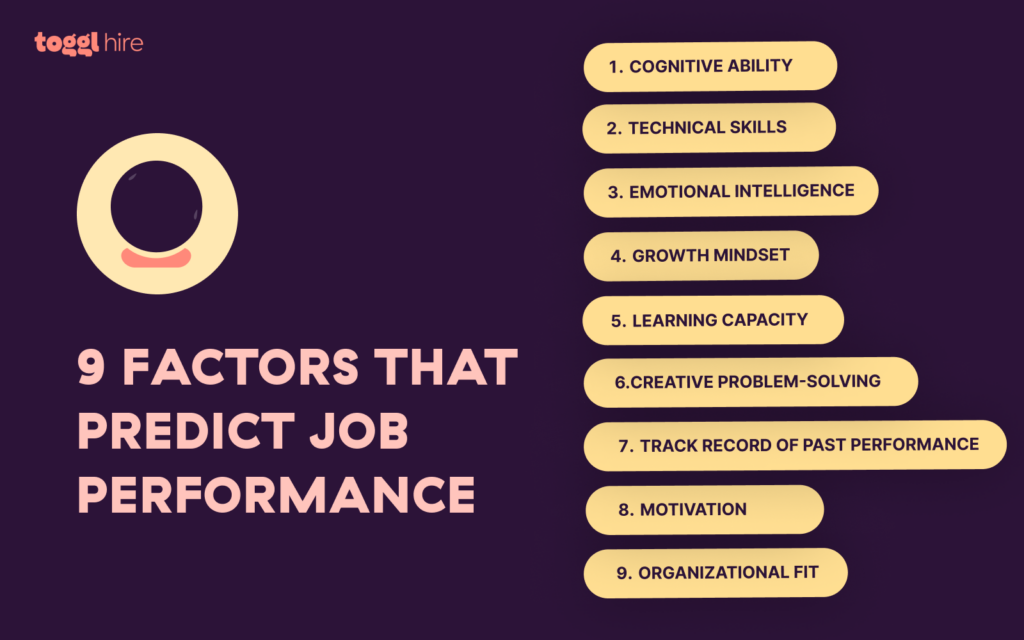
#6 – Lower Hiring Costs
Implementing job simulations can lead to significant cost savings in your hiring process. Traditional recruitment methods often involve multiple rounds of interviews, extensive travel expenses for in-person meetings, and long decision-making periods. But with these types of job simulations, you can streamline the assessment process and identify top performers quickly and cost-efficiently.
Use a job simulation to filter out unqualified candidates sooner. This reduces the need for lengthy interview stages and minimizes the chances of hiring the wrong person. Plus, the improved accuracy in candidate selection achieved through using job simulations reduces turnover rates.
#7 – It Also Benefits Candidates
Job simulations offer benefits not only to employers but also to candidates.
Through simulations, candidates gain a clearer understanding of the role’s responsibilities, challenges, and expectations. This allows them to make more informed decisions about whether the role aligns with their career aspirations.
Here are some additional benefits of using a job simulation:
- They can help you to improve the candidate experience.
- They can help you to comply with anti-discrimination laws.
- They can help you to build a more diverse and inclusive workforce.

How do you choose the right job simulation test?
To select or create the right job simulation test, you’ll need:
- An understanding of the available job simulation formats, from skills tests to work sample tests
- A clear understanding of the role requirements and ideal candidate profile
- Knowledge of when in the hiring process to best use which test type
To help you hit the ground running, take a look at the following 8 different examples of job simulation tests and how they might fit over the 3 core stages of recruitment.
#1. Screening candidates
Skills assessments
Skills assessments are a valuable tool for evaluating a candidate’s job-related abilities, such as technical skills, administrative skills, software expertise, language proficiency, and other essential competencies required for entry-level positions and management positions alike.
According to the Society for Human Resource Management, around 82% of organizations use skills testing in their recruitment process, so you’re in good company.
For example, if you’re looking for a top-notch software developer, you could use a coding test or challenge to assess their programming skills and determine if they meet your requirements.
The benefits of skills assessments are twofold: they provide quantifiable data on a candidate’s abilities and help narrow down the candidate pool efficiently. However, it’s important to remember that skills tests focus on a specific aspect and may not capture overall suitability for the role.
Tailor the skills assessment to reflect the specific demands of the role, such as a coding challenge that mirrors the real-world tasks a software engineer would handle.
With our customizable skills test templates, you can create job-specific job simulations and assessments in minutes!
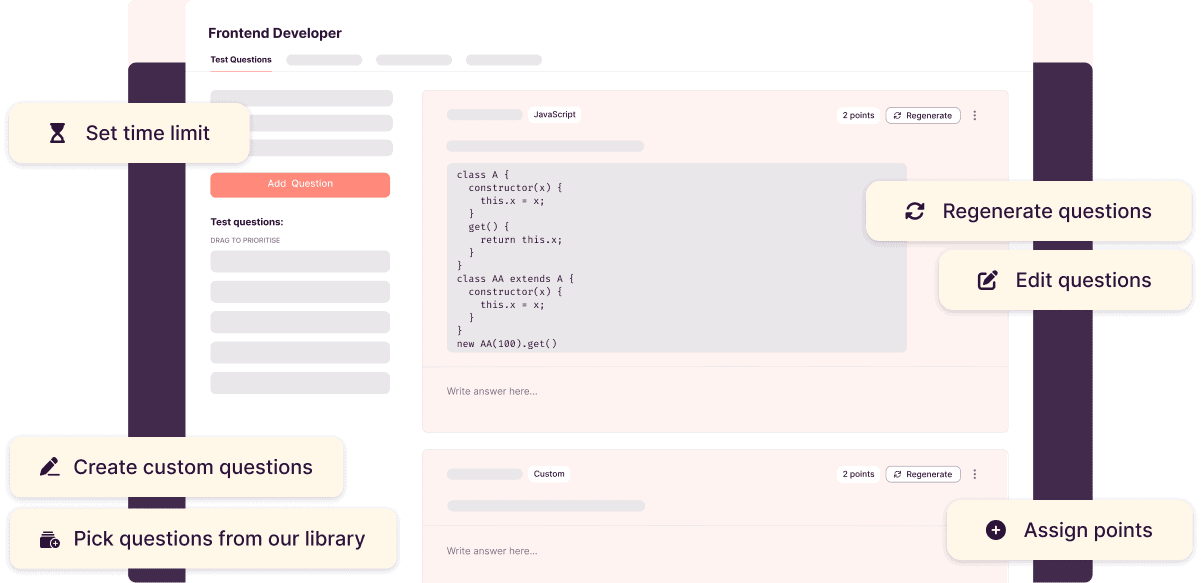
Cognitive ability tests
Cognitive ability tests assess a candidate’s analytical, critical thinking, and logical reasoning skills – the mental tools for the job.
According to the International Assessment Network, 71% of organizations use cognitive tests to screen candidates before hiring.

The perks? Cognitive ability is a strong predictor of a candidate’s ability in various roles. These tests also help reduce bias by focusing on cognitive abilities rather than personal backgrounds.
Balance cognitive ability tests with other assessments for a complete picture of the candidate’s suitability for the role.
Situational judgment tests
Situational judgment tests offer candidates a glimpse into real workplace scenarios, assessing their ability to navigate diverse situations and make appropriate choices.
Interestingly, a study in the Journal of Applied Psychology highlighted a strong correlation between situational judgment tests and job performance.
These tests provide hiring managers with practical insights by simulating on-the-job situations and showcasing a candidate’s practical decision-making capabilities. They also promote fairness and reduce bias.
Include scenarios that encompass both everyday challenges and more complex situations to mirror the demands of the role.
#2. Shortlisting candidates
Take home assignments
Take-home assignments allow candidates to demonstrate their skills and talents within a designated timeframe while working in their own environment. For example, crafting a sample social media campaign for a marketing role.
While these assignments offer flexibility, they’re not cheat-proof, and evaluating these assignments may also require more effort.
To maximize the value of these assignments, provide clear guidelines and tailor the task to align with the role’s challenges.
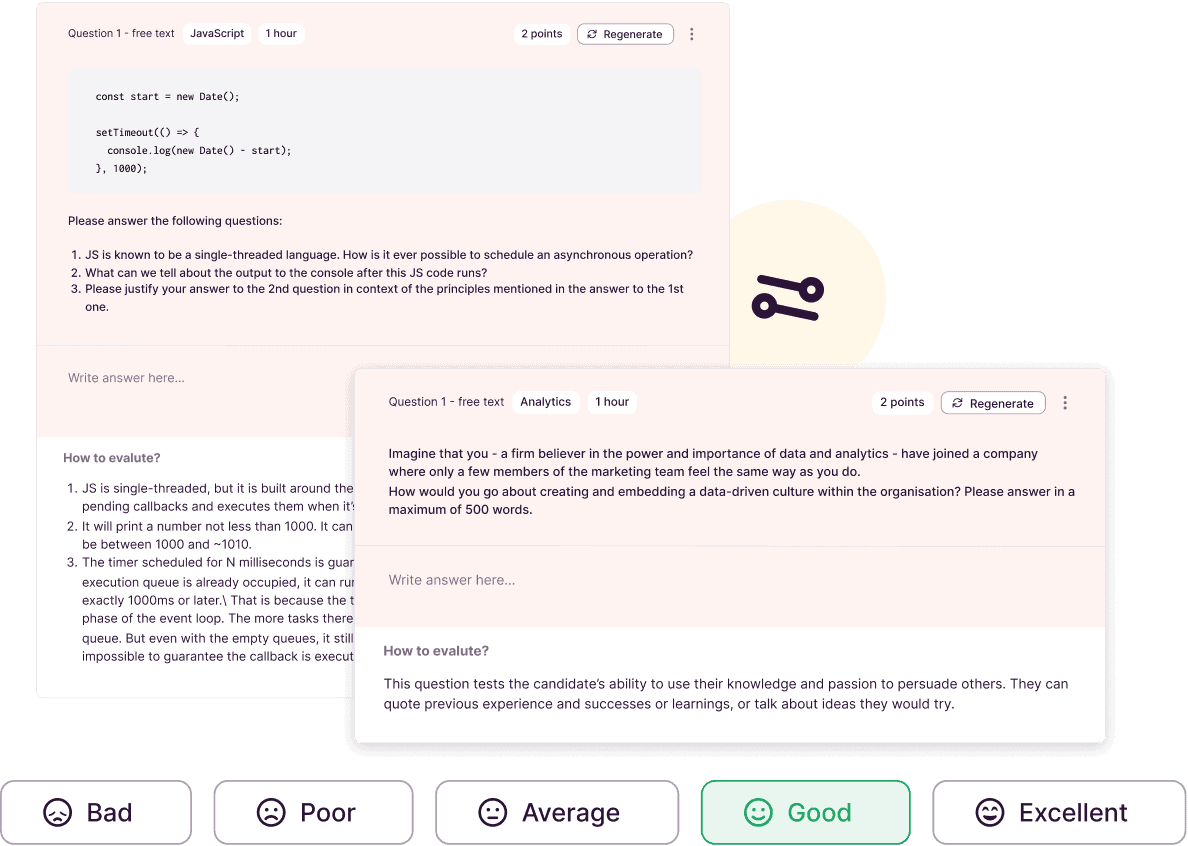
In-Basket/In-Tray Exercises
In-basket/in-tray exercises immerse candidates in realistic job scenarios, often against the clock. These exercises are designed to simulate the pressures and challenges that job applicants would experience in the role.
Picture a candidate stepping into the shoes of a manager, faced with a virtual inbox filled with emails, memos, phone calls, and tasks requiring prioritization and timely action. Through this exercise, you can assess their organizational skills, ability to handle multiple responsibilities, and their aptitude for making effective decisions.
Remember to clearly define the expectations and time constraints for completion.
Personality and culture fit tests
These tests evaluate how well a candidate aligns with your team, work environment, and company culture; assessing traits, values, and compatibility.
A Deloitte report found that 89% of executives believe a strong workplace culture attracts and retains top talent.
Combine personality assessments with other tools for a comprehensive evaluation.
#3. Making the final selection
Live exercises
Live exercises, often as part of the interview process, immerse candidates in dynamic group interviews, presentations, or case studies that mirror real-world challenges and evaluate teamwork, communication, and leadership skills.
Imagine candidates collaborating on a marketing campaign pitch or tackling complex problem-solving scenarios. That’s why these simulations are popular during graduate assessment centers when evaluating multiple candidates at once.
Like in-basket exercises, these simulations are time-intensive, so save them for the final selection stage.
Role-play
A role-playing simulation allows candidates to experience the challenges of the role firsthand by acting out scenarios, while giving hiring managers a look at how they might perform tasks and navigate interpersonal relationships.
HR Daily Advisor reveals that 65% of job candidates consider role-playing a fair assessment method for evaluating their skills.
Role-play simulations assess interpersonal and communication skills, brainstorming abilities, and adaptability, providing a glimpse into candidates’ real-life performance, but nerves can come into play during role-play exercises.
Create a comfortable environment for candidates to feel at ease. Provide feedback afterward to promote growth and improvement.
Case in point: Toggl Hire x Producement Case Study
Ready to see how we do job simulation tests in Toggl Hire? Skills testing is our thing, and it’s not only a great way to test that candidates can do the job, but it saves recruiters time and money in the recruitment process.
Take start-up incubator firm Producement, for example. They needed to hire top-quality, remote-ready software engineers at scale. Not only did they have a quantity problem, but they also had to make sure every hire was up to the job, had the right mindset, and aligned with their company culture.
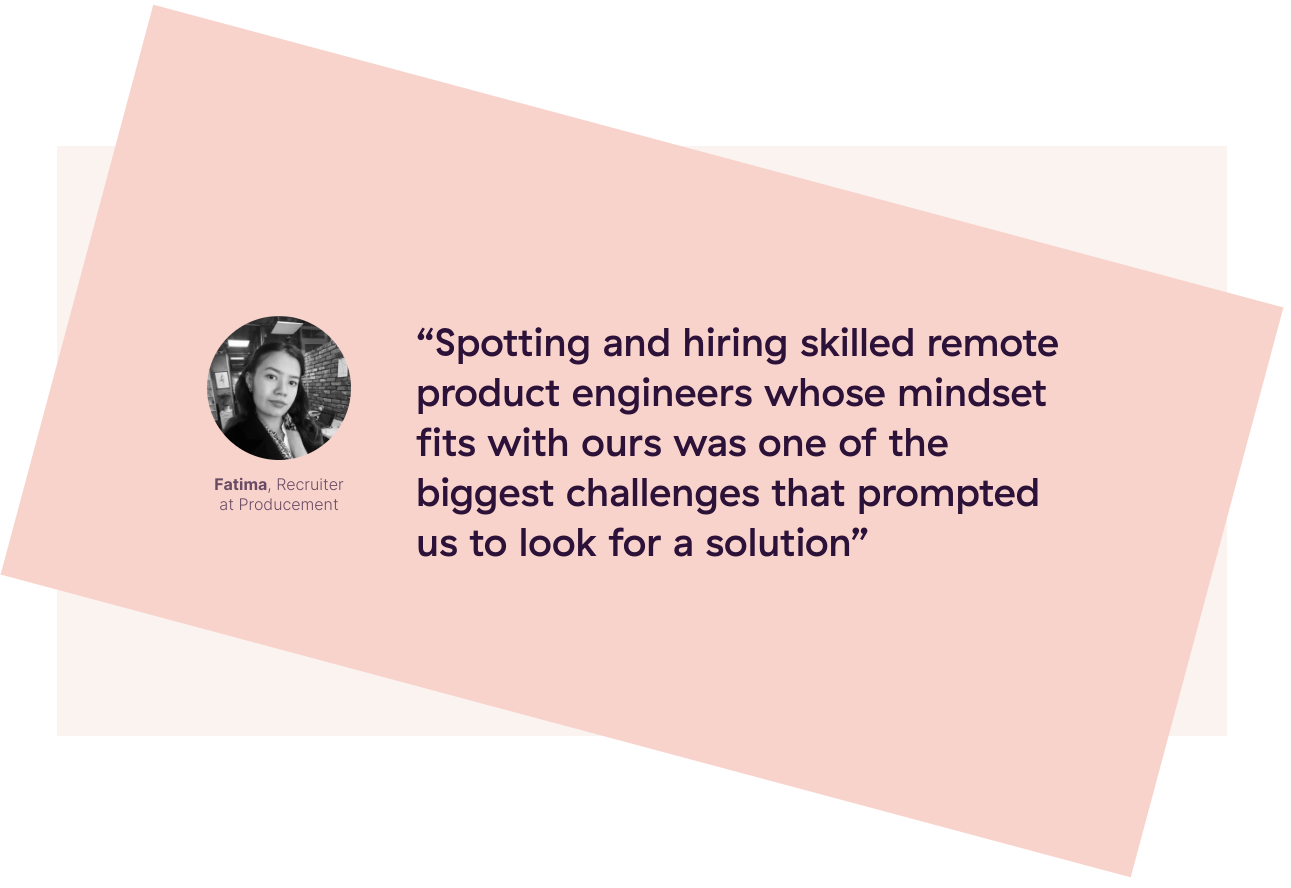
Once they got up and running with Toggl Hire, Producement’s candidates were automatically sorted into tiers based on their test scores. Candidates not up to the mark didn’t pass and got instant feedback, while top performers zipped through the screening process.
As a result, Producement was able to:
- Automatically filter out 97% of unsuitable candidates ⚙️
- Save over 400 hours of recruitment team effort ⌛
- Hire 10+ remote-ready engineers at speed for their clients. 🙌
Try Toggl Hire to Power Your Job Simulation Assessments
Job simulations are an effective and robust way to assess candidate abilities and skills.
By using Toggl Hire’s massive Skills Test Library, you can create tests that mimic real-world situations, such as coding problems or understanding their key skills. What’s more, skills tests are a far better way to identify both soft skills and hard skills compared to a standard CV.
Looking to get started with a job simulation assessment? Check out our assessment library!
Juste loves investigating through writing. A copywriter by trade, she spent the last ten years in startups, telling stories and building marketing teams. She works at Toggl Hire and writes about how businesses can recruit really great people.







